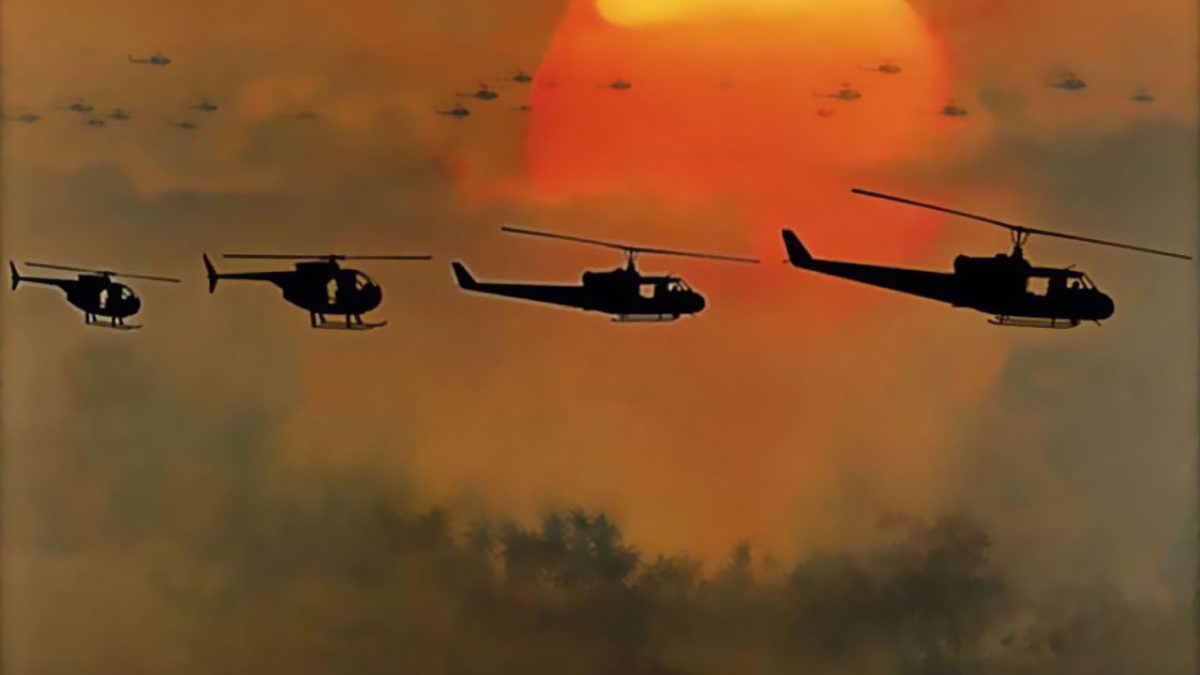Apocalypse Now

Francis Ford Coppola
USA – 1979

Screenplay: John Milius, Francis Ford Coppola, Michael Herr
Cinematography: Vittorio Storaro
Production: Zoetrope Studios
Language: English, French, Vietnamese
Duration: 153 min
Color: Color
Synopsis: At the height of the Vietnam war a burnt out special forces operative, Captain Willard, is ordered to carry out a mission that, officially, does not exist. His objective is to travel up the Mekong river by boat and, ‘with extreme prejudice’, to terminate the command of a renegade Green Beret Colonel named Kurtz who has gone insane. Deep in the heart of the jungle, Kutz has established his own world, reigning as a god among the indigenous people. As Willard enters into the jungle, he is slowly overtaken by the its mesmerizing powers which grow ever stronger as the chaos and insanity around him thicken. He soon learns that Kurtz was once one of the most talented officers in the U.S. Army, a shining example of military discipline and culture. What happened to him? Along the way, the little boat crew encounters a series of deranged scenes of violence and depravity, and as he confronts the futility of war Willard begins to understand what pushed Kurtz over the edge.
Notes:
Based on Joseph Conrad’s 1902 novella “Heart of Darkness” and co-written by John Milius, Apocalypse Now remains a work which never ceases to enthrall and amaze. In 1979, Francis Ford Coppola’s film went so far over-schedule and over-budget, that he was rushed into releasing it to an inpatient press and public who had begun referring to his pet project as “Apocalypse Never.” Major scenes never made it to the theatres at the time, until at the turn of the millennium Coppola decided to revisit what was already a critically acclaimed version, and according to many observers, tamper with it. For years, every scrap of film that Coppola had shot for his Vietnam war fantasia – all 250 hours of it – lay in a vault in Pennsylvania. The decision to take the two-and-a-half-hour original version from 1979 and turn it into a 3-hour, 16-minute reedit that Miramax marketed as the Redux can be traced to the original film’s French distributor, Paul Rassam. After seeing the 1991 documentary Hearts of Darkness: A Filmmaker’s Apocalypse (1991), he asked Coppola to restore a 20-minute sequence in which Willard stumbles upon a French plantation. The trick was convincing Oscar-winning editor Walter Murch, one of the original’s key architects, to help with the reconstructive surgery. “Certain bones in the [original] script had to be broken,” Murch commented. “It was such a delicate balance, I was frightened of going back into it.”
Coppola’s directorial star shone brightly but briefly: the first two Godfather films (1972 and 1974) and The Conversation (1974) were made in the space of a half-decade. When Coppola went into production on Apocalypse Now in 1976, he had already received two Best Picture Oscars and one for Best Director. The circumstances surrounding the making of Apocalypse Now, we have learned, resemble the reality of Vietnam far more than the film itself does. At the film’s original premiere at Cannes, Coppola himself remarked on the similarities between U.S. involvement in Vietnam and his own misadventures there: “We were in the jungle, we had access to too much money, too much equipment, and little by little we went insane.” A planned six-week production schedule swelled to sixteen merciless months in the jungle, where everything that could go wrong did. Thanks to the behind-the-scenes documentary Hearts of Darkness, made by Coppola’s wife Eleanor, we’ve been briefed on the unending calamities that hindered the Filipino production: the quick dismissal of original star Harvey Keitel; the on-set heart attack of his replacement, Martin Sheen; the torrential storms that ravaged Coppola’s sets and halted production for months on end; a rebel uprising that required Ferdinand Marcos to reclaim the military choppers on loan to Coppola; Coppola’s own depression and suicide threats; and the late, drunken arrival of Marlon Brando. Coppola persevered to eventually shoot hundreds of hours of footage, so it’s not surprising that a battalion of editors were required to sift through the rubble and find those missing treasures worth restoring in the Redux, but which, sadly, contributes nothing new to the film. Fortunately for viewers of the 2016 edition of Memory! International Film Heritage Festival, the version screened will be the original 1979 cut.
Notes based on Filippo, Maria San. “Reflections on Coppola, Director’s Cuts, and Apocalypse Now Redux.” Senses Of Cinema 16, (September 2001) and Daly, Steve. “A New ‘Now’.” Entertainment Weekly no. 609 (August 17, 2001): 18.


